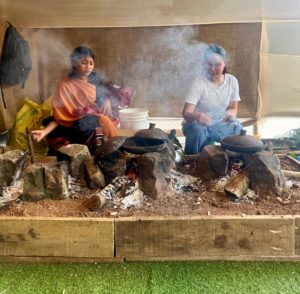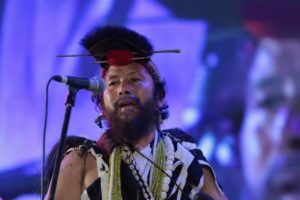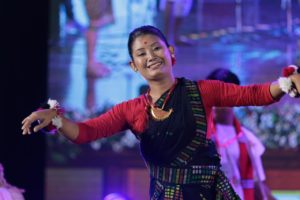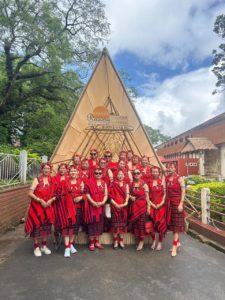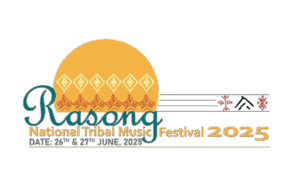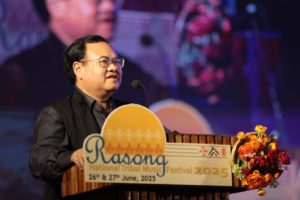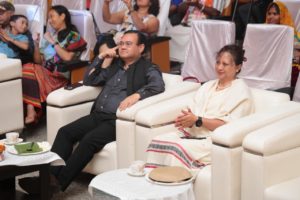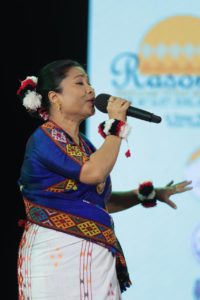 In two days of resounding tribal music, 200 plus artistes from 11 states gave a glorious performance as organic melodies and rhythms took center stage at the recently concluded ‘Rasong National Tribal Music Festival 2025’ held at U Soso Tham Auditorium, Shillong on June 26 and 27. The two-day event was packed with rooted musical renditions that were both purposeful and powerful.
In two days of resounding tribal music, 200 plus artistes from 11 states gave a glorious performance as organic melodies and rhythms took center stage at the recently concluded ‘Rasong National Tribal Music Festival 2025’ held at U Soso Tham Auditorium, Shillong on June 26 and 27. The two-day event was packed with rooted musical renditions that were both purposeful and powerful.
The much-anticipated event, coming on the heels of the World Music Day 2025 was the first ever national level tribal music festival organised by the Department of Arts & Culture, along with technical input from the Tribal Research Institute (TRI), Meghalaya with full support from the Ministry of Tribal Affairs, Government of India and backed by State Bank of India as the co-sponsor.
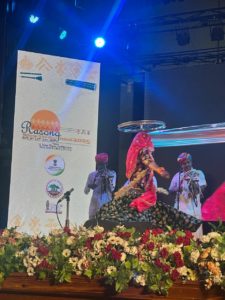 The repeated thud of tribal drums and voices from Meghalaya, Kerala, Assam, Madhya Pradesh and other states dominated the scene as the identity, the indigeneity and the integrity of grass-root music surrounded Rasong. The event kicked-off when the Minister i/c of Arts and Culture, Paul Lyngdoh as the Chief Guest lead the drum ensemble and declared the festival opened, after which, tribal music troupes took to the stage and enthralled the audience.
The repeated thud of tribal drums and voices from Meghalaya, Kerala, Assam, Madhya Pradesh and other states dominated the scene as the identity, the indigeneity and the integrity of grass-root music surrounded Rasong. The event kicked-off when the Minister i/c of Arts and Culture, Paul Lyngdoh as the Chief Guest lead the drum ensemble and declared the festival opened, after which, tribal music troupes took to the stage and enthralled the audience.
In his inaugural speech, the Minister said, “Tribal music has not got the recognition it should and this is an attempt to correct it” reaffirming the government’s commitment to inclusivity. He also added, “From now on, more meaningful cultural events will take place and we will ensure that even tribes which have not been represented so far will find representations in future similar events”.
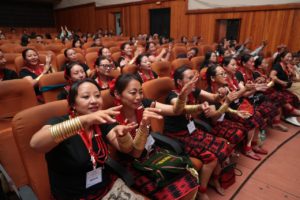 Rasong was organised in view to celebrate the richness of India’s tribal music cultures and diverse ethnic harmonies. The above National Level Festival is part of the series of ongoing yearlong Jan Jatiya Gaurav Tribal Festivals being organised and celebrated across India. Principal Secretary i/c of Arts & Culture, Frederick R. Kharkongor in his address on June 27 said, “At this festival we are bringing artistes from all over India for the purpose of celebrating tribal heritage, tribal legacy and tribal pride”.
Rasong was organised in view to celebrate the richness of India’s tribal music cultures and diverse ethnic harmonies. The above National Level Festival is part of the series of ongoing yearlong Jan Jatiya Gaurav Tribal Festivals being organised and celebrated across India. Principal Secretary i/c of Arts & Culture, Frederick R. Kharkongor in his address on June 27 said, “At this festival we are bringing artistes from all over India for the purpose of celebrating tribal heritage, tribal legacy and tribal pride”.
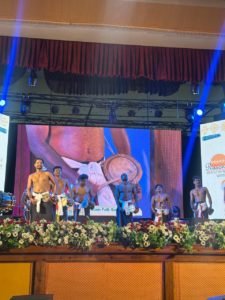 The festival was aimed at bringing together unique tribal essence through the best of indigenous music practitioners and artistes, predominantly from India’s north eastern states and also from across the country. Meghalaya as a host, showcased more artistes of substance to the festival, while the visiting artistes from other states contributed to the rich diversity of various tribal notes and rhythm from across various regions of the country.
The festival was aimed at bringing together unique tribal essence through the best of indigenous music practitioners and artistes, predominantly from India’s north eastern states and also from across the country. Meghalaya as a host, showcased more artistes of substance to the festival, while the visiting artistes from other states contributed to the rich diversity of various tribal notes and rhythm from across various regions of the country.
The event was well received by the artiste community who experienced Shillong’s natural hospitality and took back home fond memories. Performing artiste from Nagaland Atsala Anar said, “Rasong was such a memorable opportunity for us where we could showcase our rich traditional attire and culture. This is one occasion we could be ourselves among many tribal artistes enjoying every rhythm that propel the cultural performances that is very representational of the diversity of India”.
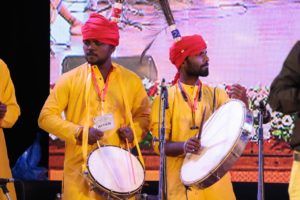 ‘Rasong’ is a common word, cutting across both Khasi-Pnar and Garo communities, and in its spirit, encapsulates the rich earthy folksy indigenous music essence of the soil, in all its inclusivity while also showcasing other unique tribal performing arts and dances as well. Rasong as a multilingual nomenclature underlines and underscores indigenous pride, confidence and strength which is the overall spirit which drives the year-long celebration.
‘Rasong’ is a common word, cutting across both Khasi-Pnar and Garo communities, and in its spirit, encapsulates the rich earthy folksy indigenous music essence of the soil, in all its inclusivity while also showcasing other unique tribal performing arts and dances as well. Rasong as a multilingual nomenclature underlines and underscores indigenous pride, confidence and strength which is the overall spirit which drives the year-long celebration.
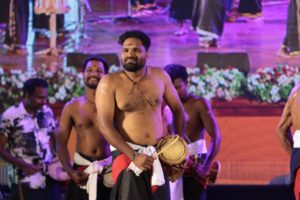 A voice from down south, one of the nodal officers from Kerala expressed contentment to have experienced a sense of cultural brotherhood at Rasong. Madhu Narayanan who travelled with his troupe from Wayanad, Kerala said, “Rasong felt more than a festival of music, rather it has reconnected tribal cultures across the country. As stakeholders, we were bridging cultures through our embellished tunes, rhythms, and the dances. Together we were celebrating our pride and intangible heritage.”
A voice from down south, one of the nodal officers from Kerala expressed contentment to have experienced a sense of cultural brotherhood at Rasong. Madhu Narayanan who travelled with his troupe from Wayanad, Kerala said, “Rasong felt more than a festival of music, rather it has reconnected tribal cultures across the country. As stakeholders, we were bridging cultures through our embellished tunes, rhythms, and the dances. Together we were celebrating our pride and intangible heritage.”
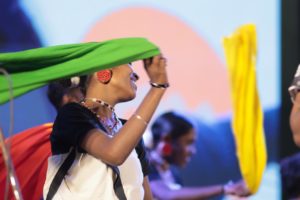 The primary vision of this national tribal music event is closely attached to five progressive and fundamental verticals, which includes aspects such as preservation and promotion of musical traditions, national cultural exchange, public awareness on tribal indigenous identities, economic support to traditional performing arts and tourism promotion anchored on indigenous identity.
The primary vision of this national tribal music event is closely attached to five progressive and fundamental verticals, which includes aspects such as preservation and promotion of musical traditions, national cultural exchange, public awareness on tribal indigenous identities, economic support to traditional performing arts and tourism promotion anchored on indigenous identity.
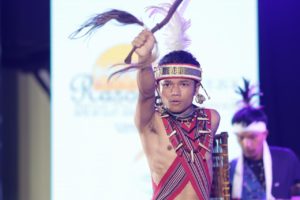 The highlights of the upcoming Rasong is to rediscover the diverse musical traditions of the hills and the plains, showcasing a wide array of musical genres including folk-songs, traditional dances based on musical patterns, ritualistic music and contemporary adaptations. The festival unfolded diverse performances and interstate artiste participation cum unique cultural presentations emanating from both seasoned and emerging talents, who contributed to a grand and unforgettable cultural exchange and mélange.
The highlights of the upcoming Rasong is to rediscover the diverse musical traditions of the hills and the plains, showcasing a wide array of musical genres including folk-songs, traditional dances based on musical patterns, ritualistic music and contemporary adaptations. The festival unfolded diverse performances and interstate artiste participation cum unique cultural presentations emanating from both seasoned and emerging talents, who contributed to a grand and unforgettable cultural exchange and mélange.
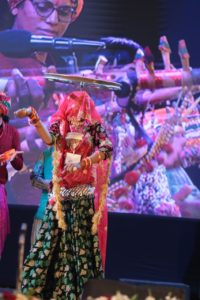 In addition to the music and performing arts, an artisanal exhibition and sale of musical instruments, handicrafts, woodworks, indigenous cuisines and GI tag products like the Ryndia, Larnai black pottery adorned the event at the specially designated Tribal Pavilion. On the second day of the event, a panel discussion was held, where traditional musical experts from different states espoused and engaged in creative discourses revolving around Tribal Music and also came out with a blueprint and a road map, on how to further distil the tribal essence of India, through its cultural showcases and how to package and parcel its cultural essence beyond the borders of the state, region and country.
In addition to the music and performing arts, an artisanal exhibition and sale of musical instruments, handicrafts, woodworks, indigenous cuisines and GI tag products like the Ryndia, Larnai black pottery adorned the event at the specially designated Tribal Pavilion. On the second day of the event, a panel discussion was held, where traditional musical experts from different states espoused and engaged in creative discourses revolving around Tribal Music and also came out with a blueprint and a road map, on how to further distil the tribal essence of India, through its cultural showcases and how to package and parcel its cultural essence beyond the borders of the state, region and country.
